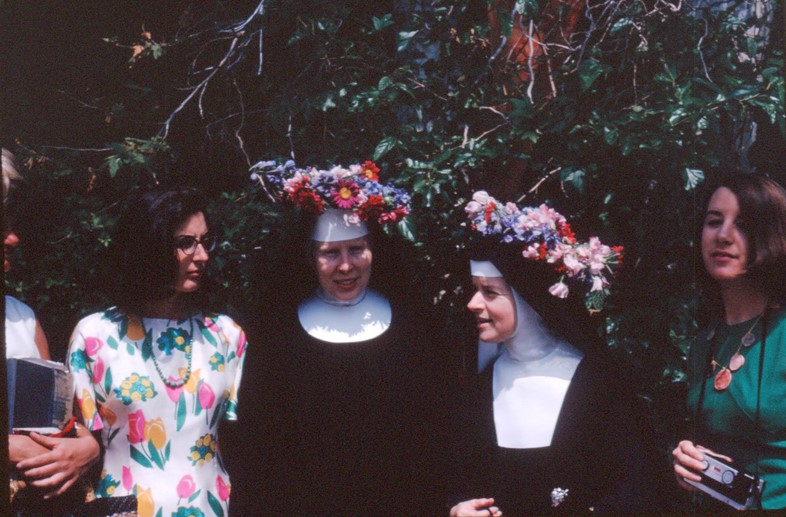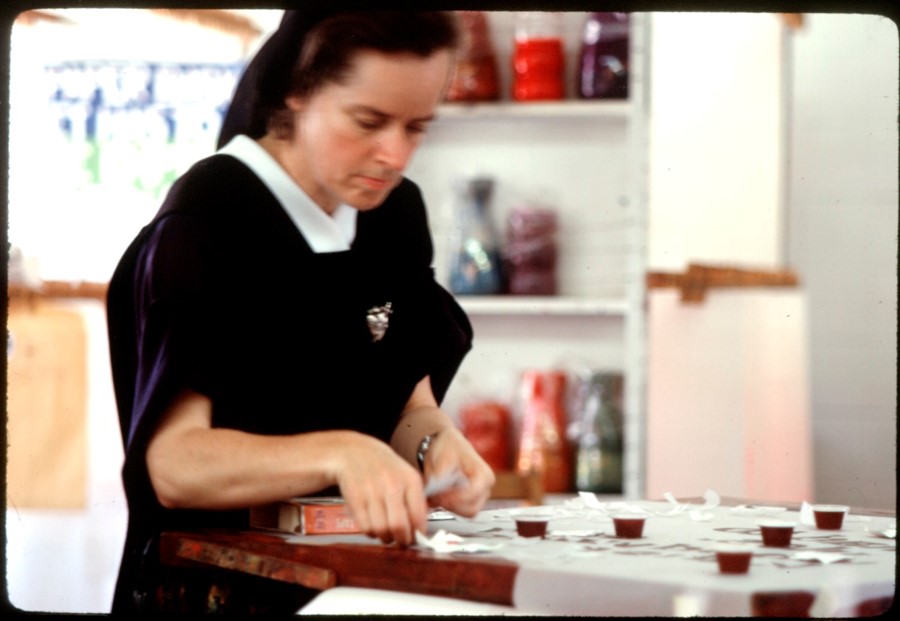Sister Corita Kent’s work took influence from Andy Warhol and inspired the likes of Alfred Hitchcock and Saul Bass. Here, we chart her little-known legacy
At first glance, Pop Art and Catholicism have little in common; where one celebrates superficial fame and consumerism, the other preaches piety and compassion. But in the surprising, vibrant art of Sister Corita Kent, currently on show at the Ditchling Museum of Art + Craft, the two strands are united to dynamic and colourful effect.
Born in 1918, Sister Corita took holy orders at the Sisters of the Immaculate Heart of Mary, the Los Angeles order where she had been educated, in 1936. The order’s college – IHC – was a liberal arts institution, known for its avant-garde views. Corita trained as an art teacher, going on to become head of the art department in 1964.
Los Angeles in the 1960s was exhilarating, a sun-drenched hive of energy that enticed James Turrell, James Baldessari and David Hockney to start forging an art scene to rival New York. In 1962 Ferus Gallery put on Andy Warhol’s first ever exhibition, showing the Campbell’s soup cans. The sight cracked Sister Corita’s world open – she recalled, “coming home, everything looked like Andy Warhol”.
Sister Corita had been experimenting with silkscreen printing for years, but the Warhol show shifted her gaze. Blending ad slogans, poetry and lines of scripture in vibrantly coloured banners and posters, she reframed the everyday language of popular culture into art that mediated on social issues. She used the energy and the aesthetics of contemporary movements such as Pop Art and protest to illuminate the divine.

She was the most unlikely of Pop Art pioneers, the severity of her monochrome habit and wimple at odds with the joyous abstraction of her pictures. Under her influence, IHC became a mecca for the likes of Alfred Hitchcock, John Cage, Ray & Charles Eames, Saul Bass and Buckminster Fuller, who became friends, fans and champions of her work. She gained global renown, taking over the cover of Newsweek magazine’s Christmas edition in 1967 with the strapline “The Nun: Going Modern”.
There was something in the air in 1962. That same year Pope John Paul XXIII convened Vatican II, the great reforming council looking to usher a medieval Catholic church into the 20th century. The liberal-leaning nuns at Immaculate Heart of Mary enthusiastically embraced the shift, but Cardinal McIntyre of the local diocese vehemently opposed the changes, and Sister Corita felt it was impossible to remain in holy orders. She resigned in 1968 and moved to Boston where she continued making art – including designing a postage stamp celebrating love which sold 700 million times – until her death in 1986.
Despite her fame at the time, Sister Corita’s legacy has been a muted one, lost in the bombast of other, louder artists. Ian Berry, who co-curated a recent show about her work, explained her silencing as – ironically – a case of bad branding. At the time “an ‘artist’ was from New York. They were a man; they were an epic, abstract painter. And she wore a habit – she just didn’t look like what the movie version of an artist looked like.”
Corita Kent: Get With The Action is open at the Ditchling Museum of Art + Craft, Sussex until October 14, 2018.
